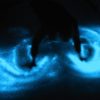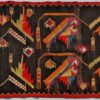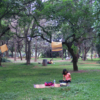Author Archive: Melisse Vroegindeweij

Re-centralizing the Human in More-Than-Human
Written by Bastiaan van Manen In the context of the current environmental crisis that our planet is facing, more and more disciplines are refocusing their attention on taking what Lupton (2019) has dubbed a more-than-human approach to understanding the world. This perspective involves recognizing the various ways in which the human and the “nonhuman”…
Read more
How Growing and Eating Sea Kale Can Be Considered a More-Than-Human Approach
Written by Kas van der Molen The Wadden Islands – stretching from the northwest of the Netherlands through Germany all the way up to the west of Denmark – are environmentally fragile and protected areas. One of the remarkable aspects of the area is that the sea is completely drained on low tide,…
Read more
Rethinking the Traditional Moldovan Carpet as a Medium of Symbiosis between Human, Nonhuman and Culture
Written by Nicoleta Cîrlig Moldovan Traditional Carpet. Source: Diez.md. Deborah Lupton describes animism as a term used in sociocultural theory to refer to the attribution of life, human characteristics or spirituality to phenomena that are otherwise culturally considered non-living or nonhuman. It is a relational perspective that views humans and nonhumans as interconnected…
Read more
Meditation or Friction?
Written by Hymke Theunissen We face a crisis of imagination. These are the words of Roy Bendor (2018, 132). Bendor refers specifically to our inability to imagine what a sustainable future might look like. Before we know what measures to take, socially or economically, we first need to be able to image an alternative…
Read more
Imagining Dark Ecologies
Written by Aishwarya Kumar In his chapter Imagination, Roy Bendor (2018) posits that imagination appears to be “essentially incomplete,” in that it is suggestive, does not predetermine the outcome of the intervention. Bendor elaborates on the various ways these “unfinished media” perform, in that they “engage, evoke, provoke, or stir their users’ imagination”…
Read more
